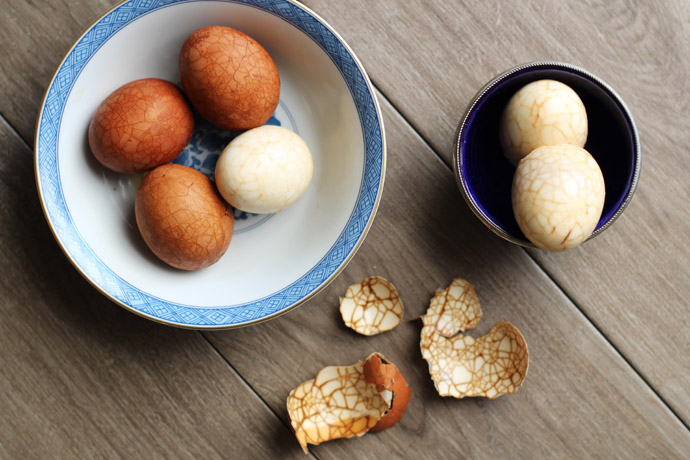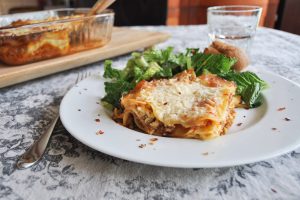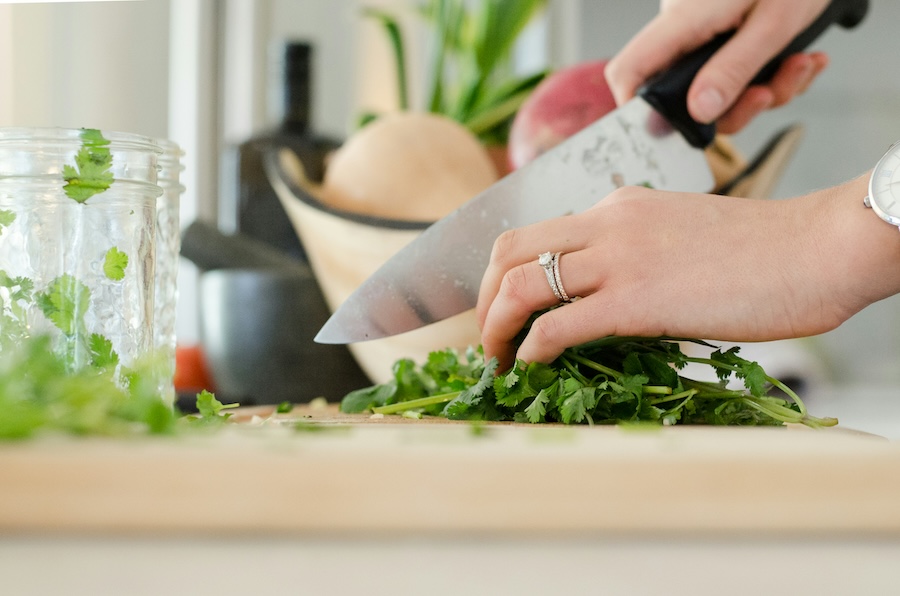Monday marks Chinese New Year and the beginning of the Year of the Monkey. A colorful celebration rich with tradition, Chinese New Year offers a spectacularly fun opportunity to talk to young children about culture. And what better way into a broad discussion of culture than through the specific lens of food.
Symbolic food plays a big role in Chinese culture and, being that Chinese New Year is an important celebration, food plays a major part in the New Year festivities. Foods at the Chinese New Year table are thought to promote happiness, longevity, and other common new year themes. Tea eggs, in particular, are said to symbolize golden nuggets and are served to promote prosperity and wealth in the new year. So cool, right?
Related: How to hard boil eggs perfectly each time.

Even better, tea eggs are super fun to make. (It’s like tie dying an egg with tea!) In fact, making tea eggs was one of the most fun kitchen projects I’ve ever done with my kids, with my second grader reporting what she learned about Chinese New Year at school the whole time. We all learned something—and then got to try a new food together. So awesome.
What are tea eggs, anyway?

Tea eggs are beautifully marbled boiled eggs with a delicious savory flavor that comes from a long steep in tea and spices. Commonly sold as a snack food by street vendors and in restaurants, tea eggs originated in China, although there are many variations throughout all of Asia. I personally am not a huge fan of hard-boiled eggs, but everyone else in my family is, so these were gobbled right up. Everyone agreed that they are delicious, and I just love when food is beautiful. These fit the bill on all accounts.
What you’ll need to make tea eggs.

Of course, the most important ingredients are eggs. They can be any size and have any color shell. You’ll also need (you guessed it) tea. Plain black tea is fine. Best even. Just a couple of tea bags should be plenty.
Two other main components, though not in the name, are soy sauce and spices. Soy sauce is a breeze; be sure to use a gluten-free variety if you want to keep these all-diet friendly. Most of the spices called for in traditional tea egg recipes are the same ones found in Chinese five spice, so I simplified things and just used that! No need to comb the spice section at the store for a bunch of different spices: Just grab the one bottle. I love it when fun food projects don’t require a lot of preparation!
Grab some water and sugar, too, and you’ll be ready to get started.
How to make tea eggs.

Tea eggs are quite simple to prepare, and your kids can easily get involved. Our recipe below has step-by-step instructions, but I have to share that my 8-year-old daughter was completely mesmerized by the process. She especially loved helping me crack the boiled eggs and was practically on pins and needles waiting for the moment when we could peel them to unveil the beauty beneath.

As pretty as the eggs are, the insides of the shells are the most stunning part. Gorgeous, right?
We all had such a great time making these—I can’t recommend this kitchen project enough. And it doesn’t just have to be for Chinese New Year!

Chinese Tea Eggs
Active prep time: 20 minutes
Total time: 2 1/2 hours to overnight
6 eggs
3/4 cup soy sauce
1 tablespoon Chinese five spice
1 teaspoon sugar
2 black tea bags


1. Place eggs in a medium pot and fill with water to about 1″ above the top of the eggs. Bring to a boil, then cook for 3 minutes while preparing an ice water bath. Using tongs, carefully remove the eggs from the hot water, setting the pot of hot water aside, and transfer the eggs to the ice water bath.


2. Remove the eggs from the ice water bath, one by one, and using the back of a spoon, gently tap the eggs all over to crack the shell. You don’t have to be too gentle since the deeper the cracks, the more marbling you’ll get. You also don’t want to be too hard since the shell should remain intact.


3. In a small bowl, whisk together the soy sauce, Chinese five spice, and sugar. Add this soy sauce mixture to the pot of water that’s been set aside, along with the tea bags. Stir and return to the pot to the stove.

4. Place the cracked eggs into the pot and set over medium heat. Allow the eggs to simmer in the soy sauce mixture for about 50 minutes.
5. Remove the pot from the heat and immediately cover. Allow to sit for at least 1 hour. You can let the eggs sit at room temperature for up to a couple of hours, but if you want them to sit overnight, place the pot in the refrigerator.

6. Remove eggs from the pot and pat dry with a paper towel. Carefully peel the eggs over a dish or paper towel, as there may be some fluid inside the shell. Enjoy immediately! If you’d like to store some of the eggs, you can do so, leaving them in the refrigerator, unpeeled, for up to a week.





